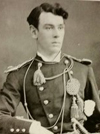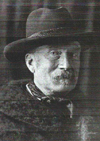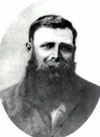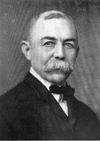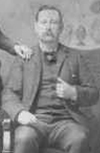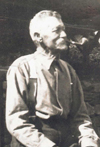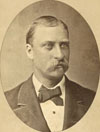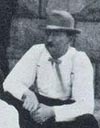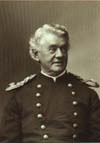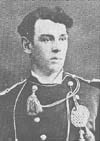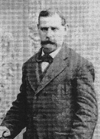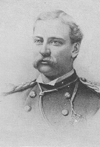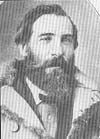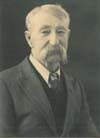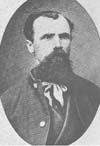William M. Harris was married on January 22, 1880, to Mary Ann Tatum in Rockcastle County, Kentucky. He was a Private in Company D who participated in the hilltop fight during the Battle of the Little Bighorn for which he was awarded the Medal of Honor.
George H. Geiger was a Sergeant in Company H who participated in the hilltop fight during the battle for which he was awarded the Medal of Honor. He died on January 23, 1904, in Dayton, Ohio, and was buried in the National Cemetery there.
Left Hand, an Arikara Scout, was born in the Dakota Territory in 1829 and died on January 23, 1931. He was buried in the Saint Charles Catholic Cemetery in Saint Francis, South Dakota. During the campaign, he and Scabby Wolf were sent back to Fort Lincoln with mail and later returned with mail from the fort.
James McNamara, who was a Private in Company H and participated in the hilltop fight, died in Pittsfield, Massachusetts, on January 23, 1932, and was buried in St. Mary’s Cemetery in Troy, New York.
James Garland Sturgis (left) was born on January 24, 1854, in Albuquerque, New Mexico. He was a Second Lieutenant with Company E who was killed with Custer’s Column. Unlike most officers, he was likely buried in the mass grave on Last Stand Hill.
Otto Arndt was born on January 25, 1844, in Bavaria, Germany. He was a member of the band who was not present at the battle due to detached service at the Powder River Depot.
Edward Garlick (left), who was a First Sergeant in Company G on furlough in England during the battle, died in Sturgis, South Dakota, on January 25, 1931, and was buried at the Bear Butte Cemetery there. See also 7th Cavalry Troopers in South Dakota.
John H. Meier (right), who was also known as Solomon Angst, was born on January 26, 1846, in Hanover, Germany. He was a Private in Company M who fought in the valley and was wounded during the hilltop fight.
Walter Oliver Taylor (left), a blacksmith with Company G who participated in the valley and hilltop fights, died in Rockland, Massachusetts, on January 26, 1931. He was buried in the Northville Cemetery in East Bridgewater, Massachusetts.
Edward H. Pickard (right) was born on January 27, 1854, in Boston, Massachusetts. He was a Private with Company F who was with the pack train and in the hilltop fight during the battle.
Jacob Katzemeir was a Private in Company G who was not present during the battle due to detached service at Powder River Depot. He died in Fort Meade, Dakota Territory, on January 27, 1880, and was buried in the Fort Meade National Cemetery there. See also 7th Cavalry Troopers in South Dakota.
Wilson McConnell was born on January 28, 1839, in New Castle, Pennsylvania. He was a Private in Company K who participated in the hilltop fight.
William Thomas Craycroft (left) was born in Springfield, Kentucky, on January 28, 1847. He was a First Lieutenant in Company B, but he was on detached service during the battle. He was in St. Paul, Minnesota, buying horses.
John Martin (right) was born in Sola Cozalina, Italy, on January 28, 1853. He was a Trumpeter with Company H who rode the last message from William Winer Cooke to Frederick Benteen.
Thomas Wellesley Causby (left) married his second wife, Emma Helen Evenson, on January 28, 1882. He was the Staff Quartermaster Sergeant who was on detached service at Powder River, Montana, during the battle.
John Pahl (right) died on January 28, 1924, in Hot Springs, South Dakota, and was buried in Bear Butte Cemetery in Sturgis. He was a Sergeant in Company H who was wounded during the hilltop fight. See also 7th Cavalry Troopers in South Dakota.


